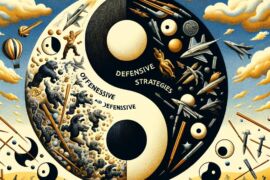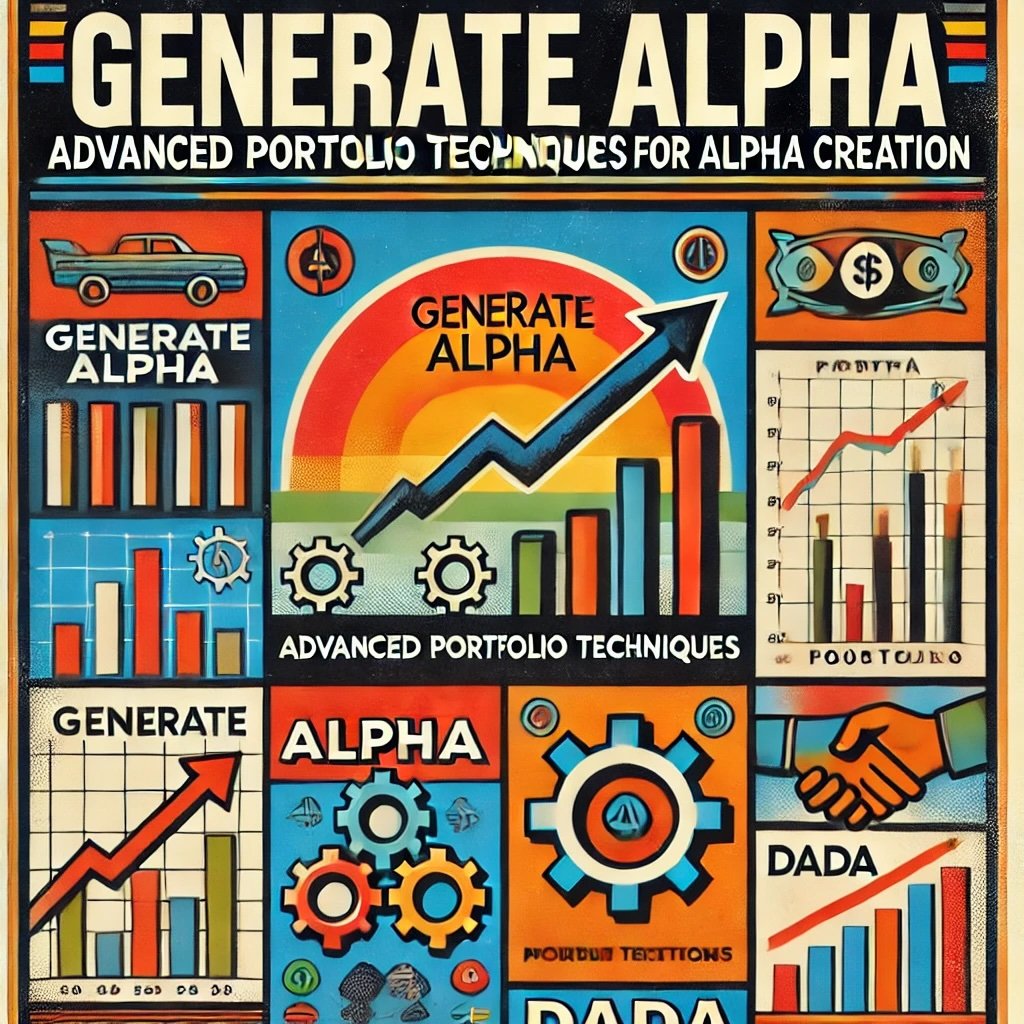Interacting with other passionate investors on social media has been one of the perks of starting Picture Perfect Portfolios and as we continue with the “How I Invest” series we’ve got an absolute banger of an interview with Tariq Dennison who has utilized relentless curiosity to his advantage to become a better investor over time.
We cover topics such as pursuing an investment career abroad, confidently investing in a combination of (ETFs, stocks and options), seeking out uncrowded and unique opportunities in the marketplace and not being afraid to hold contrarian opinions.
Overall, I think you’ll find this interview fascinating and I’m going to stop rambling and turn things over to Tariq.
Hey guys! Here is the part where I mention I’m a travel content creator! This “How I Invest” interview is entirely for entertainment purposes only. There could be considerable errors in the data I gathered. This is not financial advice. Do your own due diligence and research. Consult with a financial advisor.

These asset allocation ideas and model portfolios presented herein are purely for entertainment purposes only. This is NOT investment advice. These models are hypothetical and are intended to provide general information about potential ways to organize a portfolio based on theoretical scenarios and assumptions. They do not take into account the investment objectives, financial situation/goals, risk tolerance and/or specific needs of any particular individual.
How I Invest with Tariq Dennison
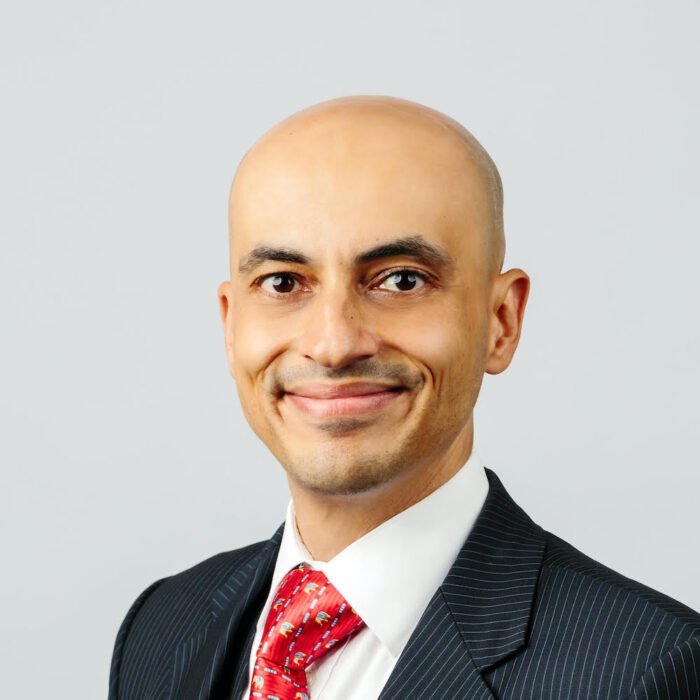
Meet Tariq Dennison: Now Based in Switzerland
I founded and run investment advisory and wealth management practices in the United States and in Hong Kong under the “GFM” brand, and am now in the process of setting up a licensed practice in Switzerland.
I happened to grow up on US Army bases in Germany during the final years of the Cold War, before returning to the homeland to receive my Bachelor’s in math and philosophy from Marquette University and Master’s in Financial Engineering from UC Berkeley, with a 5-year stint in Silicon Valley in between.
After Berkeley, I went to Wall Street where I spent most of the 2000s (aka the “noughties”) working at the investment bank Bear Stearns before it collapsed and was gobbled up by JPMorganChase in 2008.
In 2009, I decided to spend the year traveling with my wife and baby on a 206-day train trip from Turkey to Singapore, exploring on foot many emerging markets I didn’t feel one could see well from behind a spreadsheet, and of course, I doubted I would ever have an opportunity to do such a trip again anytime soon.
I then moved to Hong Kong in 2010 where I first worked for the wealth management divisions of two very different foreign banks, Canada’s CIBC and France’s Societe Generale, and since leaving that last banking job I’ve been devoted to the side of the investor.
Since 2017, I have also been teaching Masters in Finance courses on Fixed Income and Alternative Investments at ESSEC Business School in Singapore, and always look forward to going back to Asia.

So far I have only written one book, “Invest Outside the Box“, and am in the process of writing my second, currently titled “10 Ways To Invest“, where I compare and contrast 10 different investment philosophies/ideologies and what I see those implying in practice.
So in many ways, this interview is perfectly timed, as you’re asking me to reflect on how I came across those 10 different investment approaches and what I took from each in forming my own.

5 Distinct Stages: Tariq’s Investing Influences and Education
Who were your greatest influences as an investor when you first started to get passionate about the subject?
How have your views evolved over the years to where you currently stand?
If you had to recommend a handful of resources (books, podcasts, white-papers, etc) to bring others up to speed with your investing worldview what would you recommend?

I’d divide my investor education and influences into five distinct “stages”, as follows:
First, my fascination with international financial markets started at the age of six, when I first started handling small amounts of pocket money in both US dollars and Deutsche Marks, and noticed how much the exchange rate between dollars and marks moved around at that time.
A few years later, I started appreciating the wonderful world of interest rates, not only because my $100 savings account at the bank could pay me an $8 “bonus” per year without my doing anything, but also because I started noticing that interest rates too moved around like exchange rates, and that interest rates in dollars could move quite differently from those in marks.
I believe this early foundation in foreign exchange and interest rates gives me quite a different starting point from many other investors I speak with.
Second, starting at the age of 19 when I got my first full-time professional job after university, and starting having some of my own money to invest in mutual funds and individual stocks, I started trying to teach myself the basics of fundamental and technical analysis from various sources.
I felt frustrated that investing, which was both more profitable and could easily be more transformative than my day job at the time, was not my full time professional focus, and so that’s why I decided to apply for the Masters in Financial Engineering program at UC Berkeley, with the goal of becoming a full-time investment professional while fully applying all my skills in math and computation.
The third “stage” in my education as an investor was that full-time academic program at Berkeley, where among others, Hayne Leland, John O’Brien and Mark Rubinstein laid out for me the “canon” of modern financial academic thought, grounded in theories of market efficiency and a mean-variance view of pretty much all financial asset classes.
Here is where I sometimes say I was indoctrinated into the “Church of Bogle”, or as Warren Buffett might say, into the generation of students who was taught to play poker without looking at the cards, though there were two key “post-Bogle” ideas I took away from Berkeley: option strategies, and behavioural finance.
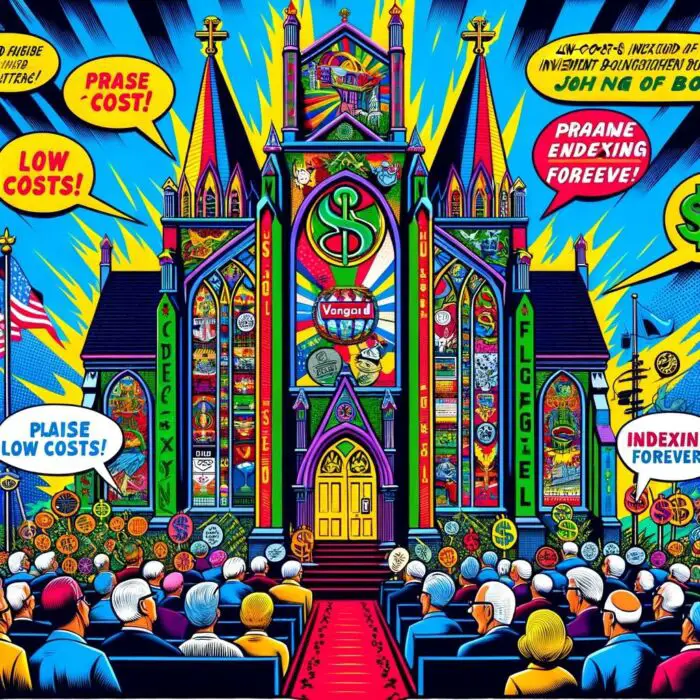
Fourth was my decade working for “sell side” investment banks, where I largely applied what I learned at Berkeley, though here it was clear my job was to sell what made money for the bank, not necessarily what might be best for the investor.
I might divide my work and lessons from this stage into those that dealt with indexes, including equity indexes but also commodity and credit indexes, versus work on investor products focused on a single stock, credit name, commodity, or currency pair.
All of this experience gave me plenty of opportunity to question my own investment thinking, but my main lesson from this era was understanding how the incentives of banks, brokers, and other institutions might differ from the interests of investors.
My fifth, latest, and greatest chapter in developing my investment philosophy has been over the past decade since I left my last bank job, and it was only then that I really started reading and debating the investment lessons of Peter Lynch, Warren Buffett, or David Booth against those of Jack Bogle.
It was over this decade that I proudly say that “I left the Church of Bogle” and began appreciating the virtues of many investment portfolios that modern Bogleheads seem to argue are out of date.
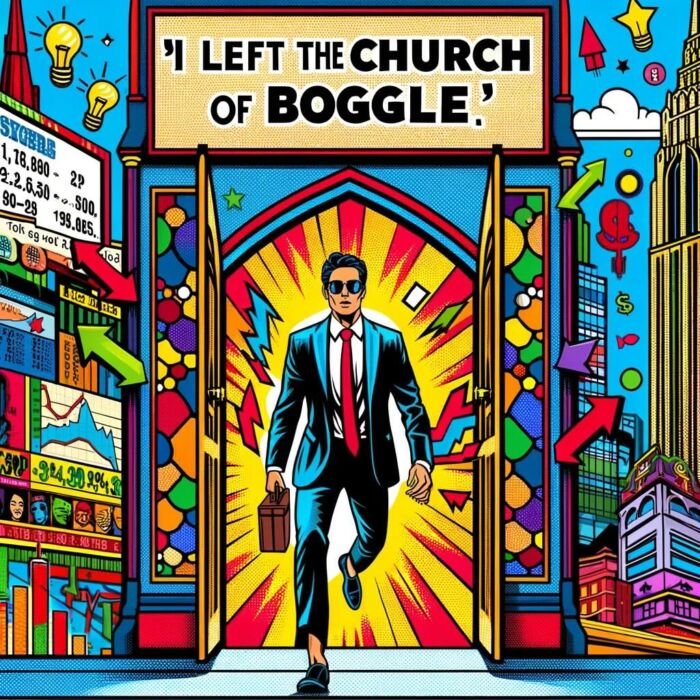
One reason I’m writing my upcoming book, “10 Ways To Invest”, is because I would like to provide a concise one-stop guide to the many different investment ideologies I’ve come across, and how I have chosen to accept or reject different ideas in forming my own investment philosophy.
For beginners who would like to get started with existing books, I highly recommend the books of Peter Lynch (“One Up On Wall Street” and “Beating The Street”), as well as the “Little Book” series (“The Little Book Of Common Sense Investing”, “The Little Book That Beats The Market”, etc.).
I also find the videos and podcasts of Ben Felix provide good, concise answers to many beginning investor questions.
Source: Swissquote on YouTube

American Born But Raised Outside the United States
Aside from investing influences, what real life events have molded your overall views as an investor?
Was it something to do with the way you grew up?
Taking on too much risk (or not enough) early on in your journey/career as an investor?
Or just any other life event or personality trait/characteristic that you feel has uniquely shaped the way you currently view yourself as an investor.
Education.
Travel.
Work Experience.
Volunteering.
A major life event.
What has helped shape the type of investor you’ve become today?
No doubt that being an American born and raised outside the United States, and choosing to continue living most of my adult life outside the United States, both reflects and shapes my worldview as much as it moulds my thought and practice as an investor.
I often feel I am one of the most aggressive in trying to search far and wide across many borders for investment opportunities and inspirations, and I feel like I consider events like the collapse of the Japanese stock bubble, the adoption of the Euro, or the opening of China’s stock connect programs as far more significant than many other Anglophone investors I speak with.

Personally, I’ve always considered myself relatively frugal, though the type of frugal person who strongly prefers having a few very high quality items out of which I get great value, rather than the “cheap” type of frugal.
That frugality gives me a deeply ingrained preference for “value” priced investments, though in both life and investing, I will pay up for quality when I see the value.
Source: Swissquote on YouTube

Emerging Markets Are As Awesome As You Think They Are
Imagine you could have a three hour conversation with your younger self.
What would you tell the younger version of yourself in order to become a better investor?
Something that you know now that you wish you knew back then.
It is of course challenging to try and pick the most valuable lessons from three decades of experience and try and condense them into three hours, but if I had to pick three “important concepts” I wish I had one hour each on as a younger investor, those might be:
1./ Graham, Dodd, and Lynch was right, Bogle is wrong.
Learn the basics of valuation and continue to practice them, and you’ll have a much better understanding of where all your investments are going.
High school math is really all you need here, forget calculus, unless you absolutely need it to gain intuition about how options and yield curves work – calculus is useless for equities and FX.
Read as much as you can and study history, as history will serve you better than math in investing.
2./ Emerging markets are as awesome as you think they are, but they are full of many challenges they will never teach you about in school.
Learn early on about value traps, SOE governance, related party transactions, and institutional biases, and you’ll be very successful in EM. Again, it helps to study history.

3./ Who you choose to work with is always more important than what you choose to work on.
Choose colleagues, managers, partners etc that you can trust and compliment, and that you enjoy working with, and you’ll do better than trying to do more interesting work by yourself.
Source: Phil Bak on YouTube

How Tariq Dennison Invests: Popping Open The Portfolio Hood
Let’s pop the hood of your portfolio.
What kind of goodies do we have inside to showcase?
Spill the beans.
How much do you got of this?
Why did you decide to add a bit of that?
If you’d like to go over every line-item you can or if would be easier to break your portfolio into categories or quadrants that’s another route worth considering.
When do you anticipate this portfolio performing at its best?
I run somewhat different portfolios for my taxable accounts, my retirement accounts, and for my wife who is a non-US person, and accounts I manage for clients generally reflect one of these three depending on whether that client account is US taxable, US retirement, or non-US.
Very broadly though, I think you could categorize these holdings into ETFs, bonds, stocks, and options with some further sub-categorization in each of these four.
ETFs generally serve as “placeholders” in my portfolios, as they provide a simple “one-click” way to allocate to a certain segment of the stock or bond market without my having to worry too much about how that new purchase will affect the overall portfolio balance.
I usually prefer to make stock purchases deliberately at times I feel ready to buy that specific stock, which may be different than times that money comes into an account, so ETFs often serve as this bridge.
The main ETFs I currently use are the Dimensional and Avantis ones in the US, and in the UCITS space there are some by JPMorgan and Franklin that I wouldn’t feel bad about holding for several years if I never get around to switching them into individual stock ideas.
Individual bonds are much simpler ways to manage cash flow schedules than many investors and advisors seem to give them credit for, and I generally build traditional “ladders” of bonds to provide a “runway” of cash flows if I have shorter-term withdrawal needs not fully covered by expected dividends.
I think it’s unfortunate that the biggest bond funds have become over-diversified pools with no maturity date, rather than something simple like a CD or BulletShare product you can simply hold to maturity.
When it comes to the individual stocks in my portfolios, here you may find the greatest variety of geographies and sectors, but what you will probably find in common among most, if not all, of these names is a preference for brand name, cash cow businesses at reasonable prices.
Some examples of these stocks, roughly from East to West, include:
- Japan’s Seiko Holdings and Morinaga &Co (the confectioner) […]
- Korea’s Samsung and Hyundai, whose GDRs trade in London
- Chinese jewelers Chow Tai Fook, Luk Fook, and Chow Sang Sang
- Indonesia’s Indofood
- Thailand’s ThaiBev and Airports of Thailand
- Singapore’s DBS, SGX, and SATS
- Bangladesh’s Beximco Pharmaceuticals, whose GDRs trade in Germany
- India’s Infosys and Wipro
- Kazakhstan’s Kazatomprom (Uranium)
- Turkey’s Ford subsidiary, Ford Otomotiv, which has an ADR
- South Africa’s SPAR Group
- Austria’s Erste and Raiffeisen banks
- Switzerland’s ABB and Dufry
- Germany’s Fresenius (dialysis clinics) and BMW
- Denmark’s Maersk Shipping
- Sweden’s Electrolux and Securitas
- France’s Michellin
- Britain’s Unilever, Diageo, and BAE
- Mexico’s Femsa and Kimberly Clark de Mexico
- The US’s Google/Alphabet and Stanley Black & Decker
One name that I’d mention off this list, because it looks more like an “exception” as a company that is not yet profitable, is Switzerland-based CRISPR Therapeutics.

Finally, there are options contracts I use in a number of ways:
- Covered calls when I feel a stock might be getting over-priced, and want to set a disciplined time and time frame to take profits, while getting paid to wait,
- Cash-secured puts to get into a stock I like at a discount, while getting paid to wait,
- Buying calls, puts, or spreads when those seem to have better risk-adjusted returns than outright stock positions
Not all stocks I buy have listed options, but when they do, I find a disciplined option strategy can actually makes a stock strategy more organized and less risky, not more risky.
The biggest problem I have with using options instead of just buying and holding good stocks forever is that options encourage you do “date, rather than marry” good companies, though I still find it very difficult to find a good enough company at a good enough price that I would simply want to “marry” them.
That is why my portfolio is still so diversified into dozens of 2% positions in many different stocks, rather than concentrated in just “three wonderful businesses” that seem so hard to find.

Relentless Curiosity For Better and More Diverse Investment Opportunities
What kind of investing skills (trading, asset allocation, investor psychology, etc) are necessary to become good at the style of investing you’re pursuing?
Is there a certain type of knowledge, experience and/or personality trait that gives one an advantage running this type of portfolio?

I think the main skill to “Invest Like Tariq” would be a relentless curiosity to keep searching for better and more diverse investment opportunities, and to keep wanting to learn more about how each investment you own is likely to perform longer-term.
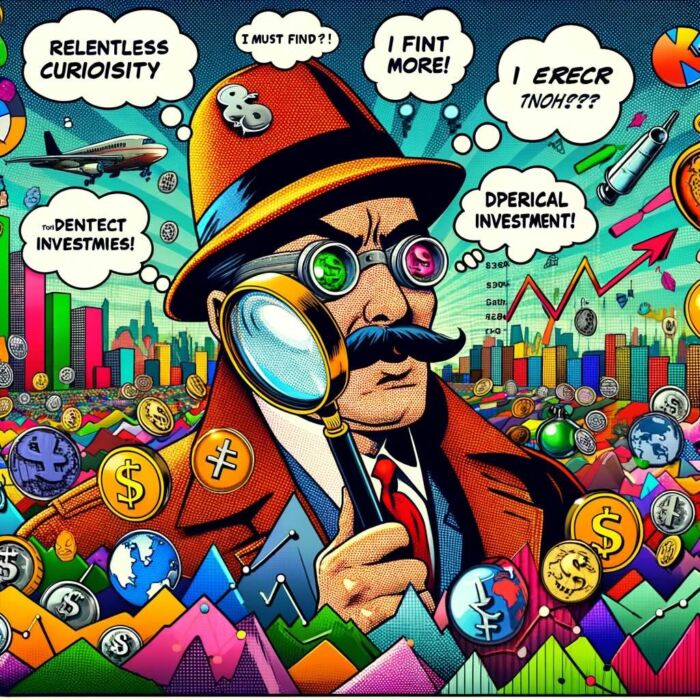
As much as I pride myself on my math skills, I actually use very little math beyond simple DCF calculations in my investment analysis and portfolio construction.
If you had a year to study either math or history, I would actually argue an extra year of history is what would make you a much better investor, especially if that year could include not only 20th century market history, but also examples of earlier market bubbles and failures.
I have come to love studying history, and feel my study of history is becoming more and more relevant to my investing every year.
Being an experience trader is helpful, but not really necessary for most of what I do, other than having the temperament to just pull the trigger and make decisions based on numbers and history lessons, rather than on emotion.

Invest Like Tariq: More Aggressive and Conservative Approaches
What would be a toned down version of your portfolio?
Something that’s a bit watered down.
Conversely, what would be a more aggressive version of your portfolio, if someone were willing to take on more risk for a potentially greater reward?
You could “tone down” or “tone up” my portfolio strategy in at least two directions: one in terms of risk, but the other in terms of effort.
One “toned down” version in the sense of being much less effort is one that uses three ETF for the equity core: US small value, international small value, and EM value, all from either Avantis or Dimensional, roughly equal weighted, and dilute that with bond funds (BulletShares/iBonds or the same provider’s bond funds) to dial the overall portfolio risk to the desired level.
A second “toned down” version that would have a bit more of the international flavor would be a portfolio of 20x 5% positions each in single-country focused ETFs, perhaps like the 20 countries mentioned earlier.

This might provide a similar geographic mix, though there are of course several reasons why I’ve chosen those individual names instead of using an ETF to allocate to some MSCI or FTSE index of that country.
A “more aggressive” version of what I do would mostly require more time and effort in seeking out and making investments.
It would not necessarily be higher risk, but would it would be a lot more work.
For example, if I had more time, I’d love to fly to Seoul, Saigon, Istanbul, and Lagos, opening local brokerage accounts in each, and use those to buy local shares for my portfolio I currently have no access to.

Look For Opportunities In The Market Few Others Are Seeking
What do you feel is your greatest strength as an investor?
What is something that sets you apart from others?
Conversely, what is your greatest weakness?
Are you currently trying to address this weakness, prevent it from easily manifesting or simply doubling down on what it is that you’re great at?
No doubt my greatest strength is that relentless curiosity mentioned earlier.

This is what motivates me to look for opportunities in parts of the market few others are looking, and to keep learning and reading all the time.
My greatest weakness might be my lack of patience for tasks I consider tedious and uninteresting, especially if they require me to be organized, which I am not.
I really don’t care or feel bothered about not being that organized around the tedious stuff, since life is too short for me to not just focus on what I am both good at and interested in.
Some might also argue that my obsessive interest in more obscure and exotic investments might be a weakness that keeps me from profitable opportunities in more obvious and boring parts of the market, especially US large caps in recent years, but I would argue that irrational interests are only a handicap to an investor who pays too much for them.
No matter how interested I am in a potential investment, I put valuation at the center of the investment decision process, and that has kept me out of many obscure and exotic investments I would have liked for every other reason other than the high price.

Emerging Markets: High Conviction Allocation Or None At All
What’s something that you believe as an investor that is not widely agreed upon by the investing community at large?
On the other hand, what is a commonly held investing belief that most in the industry would agree with that rubs you a bit differently?
There are several key ideas I feel the broader investment community would disagree with me on, and here are just a few off the top of my head:
1./ The Dow Jones Industrial Average has become greatly under-appreciated.
This 100+ year old benchmark uses only 30 stocks, with a super-simple weighting mechanism you can track perfectly by simply owning an equal number of shares of each of those 30 stocks, and does a remarkably good job tracking the overall US market.
30 stocks is about the upper limit of what many individual investors can personally understand and keep up with, and many investors would have a better understanding of what they own with a portfolio of 30 stocks like the Dow than with a portfolio of hundreds or thousands of stocks whose names and businesses most of them will never know or understand.
2./ An idea worth repeating from #1, I think many investors would be better off owning 10-40 stocks they can understand than a fund or funds with hundreds or thousands of stocks they will mostly never understand.

3./ Emerging markets should be at least 20% of your portfolio, or you may as well leave them out altogether.
In fact, I’d argue many broad categories of investments, including small caps, commodities, etc. should be ones where you either have the conviction to commit at least 20%, otherwise it’s better to just allocate zero and forget about them.
As a general rule, any ETF that I would consider “diversified core” is one I have this minimum 20% initial weight requirement for.
4./ Broadly diversified bond funds, especially “aggregate” bond funds are too complex and less suitable for many investors than a simple hold-to-maturity bond ladder, or even an individual T-note.
5./ Book value, especially tangible book value per share, has become very under-rated as a metric for investors.
I’m not saying you should only buy stocks that trade at low P/B multiples, but companies that show steady TBVPS growth over time tend to be doing something better than companies with declining TBVPS.

Learning GAAP and IFRS Accounting
What’s a subject area in investing that you’re eager to learn more about?
And why?
If you knew more about that particular topic would it influence the way you’d construct your portfolio?
It would be tough for me to decide whether it would be better for me to spend 100 hours better understanding the difference between GAAP and IFRS accounting, or better learning how to more directly access and avoid pitfalls in frontier markets like Nigeria and Vietnam.
By now, I’m sure it’s clear how either might sharpen and enhance how I construct portfolios.

The Anti-Tariq Dennison Portfolio
What would be the ultimate anti-Tariq portfolio?
Something you’d never own unless you were duct-taped to a chair as a hostage?
What about this portfolio is repulsive to you?
Conversely, if you were forced to Steel Man it, what would potentially be appealing about the portfolio to others?
What is so alluring about it?
A very simple, even if not “ultimate” anti-Tariq portfolio is probably one many may consider extremely mainstream: 60% VTI + 40% BND.
This portfolio is 100% US, with a heavy tilt towards large caps and no value or profitability filter, and the bond allocation is every bond and the kitchen sink with no regard to any investor’s actual fixed income needs.
Besides how the portfolio itself differs from how I would construct one, my main critique is the “why” behind it – this portfolio as strikes me as one bought by someone who simply wants the cheapest and most broadly diversified fund without knowing why they own it, and without even completing their diversification by including international exposure.
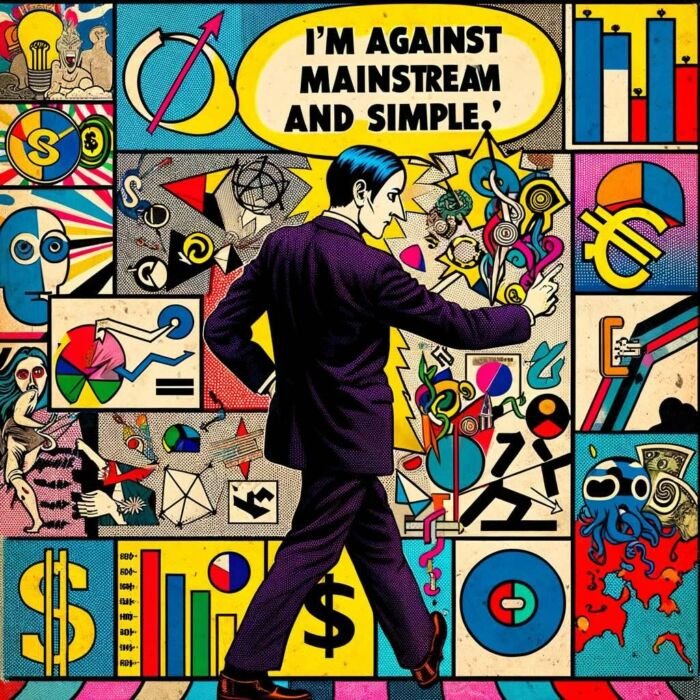
I sometimes say ARKK is “diversification away from my investment style”, but I actually include ARK funds in some of my portfolios, because I do think Cathie’s team is looking at many of my blind spots, and I want to have an eye on innovations they’re actively looking at – it’s passive 0.01% positions to many of those names in a fund like VTI I find more repulsive.
Perhaps the two most obvious changes I might make to that 60% VTI + 40% BND portfolio to make it more repulsive would be to replace each of those funds with high-fee closet index funds, then levering it up at retail margin rates to add a 10% allocation to Bitcoin, or even worse, a Bitcoin fund or ETF.

I probably don’t need to be too creative about “Steel Manning” this portfolio, as it already has very many public advocates: broadly diversified passive index funds have lots of research showing they tend to outperform their active counterparts over time, largely due to their lower expenses.
Bogle himself was an advocate of US-heavy portfolios and often stated international diversification might be unnecessary for many investors.
If I were to “Steel Man” this “All-American” portfolio, I would highlight many features of American exceptionalism that have made the US one of the best performing stock markets in the world not only over the past decade, but over the past century+, and why those American advantages are likely to continue for the rest of the 21st century.
To justify the US’s relatively expensive valuations, I would probably also need to paint a scenario of how the US and US alone would be able to sustain economic growth for the rest of this century, a scenario which would likely seem darker for most other countries around the world than anything most of those countries have seen since the end of the second World War.
That scenario especially requires creativity given how expensive US large caps still are and how much weight those trillion-dollar companies have in the future returns of VTI.
Thanks so much for taking part in the “How I Invest” series! How can others connect with you on social media and other platforms that you run?
I’m probably in too many places, and one of my projects over this past year, as I’ve moved, and next year, as I finish my next book and streamline my business, is to try and focus on few channels for broadcasting my ideas.
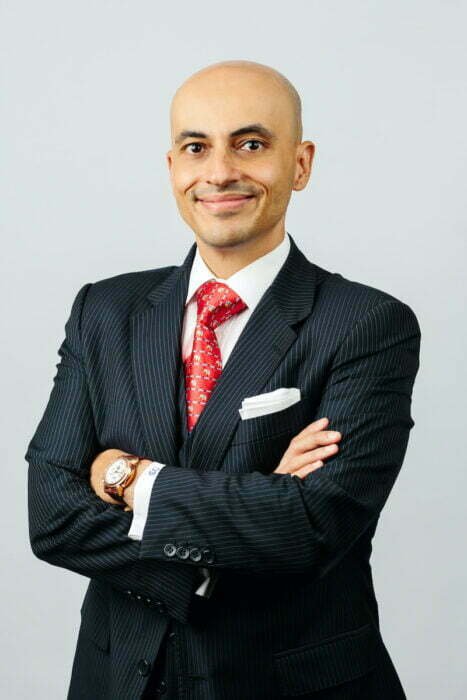
Connect With Tariq Dennison
For now, the best place to see my investment ideas is probably on Seeking Alpha (https://seekingalpha.com/author/tariq-dennison), finding my name on LinkedIn (Tariq Dennison) or by Googling my name (I’m the only Tariq Dennison in the world, as far as I know).
I also probably spend too much time on Twitter, where I’m currently active @QuantOfAsia.

Nomadic Samuel Final Thoughts
I want to personally thank Tariq Dennison for taking the time to participate in the “How I Invest” series by contributing thoughtful answers to all of the questions!
If you’ve read this article and would like to take part in the “How I Invest” interview series feel free to reach out to nomadicsamuel at gmail dot com.
Important Information
Comprehensive Investment Disclaimer:
All content provided on this website (including but not limited to portfolio ideas, fund analyses, investment strategies, commentary on market conditions, and discussions regarding leverage) is strictly for educational, informational, and illustrative purposes only. The information does not constitute financial, investment, tax, accounting, or legal advice. Opinions, strategies, and ideas presented herein represent personal perspectives, are based on independent research and publicly available information, and do not necessarily reflect the views or official positions of any third-party organizations, institutions, or affiliates.
Investing in financial markets inherently carries substantial risks, including but not limited to market volatility, economic uncertainties, geopolitical developments, and liquidity risks. You must be fully aware that there is always the potential for partial or total loss of your principal investment. Additionally, the use of leverage or leveraged financial products significantly increases risk exposure by amplifying both potential gains and potential losses, and thus is not appropriate or advisable for all investors. Using leverage may result in losing more than your initial invested capital, incurring margin calls, experiencing substantial interest costs, or suffering severe financial distress.
Past performance indicators, including historical data, backtesting results, and hypothetical scenarios, should never be viewed as guarantees or reliable predictions of future performance. Any examples provided are purely hypothetical and intended only for illustration purposes. Performance benchmarks, such as market indexes mentioned on this site, are theoretical and are not directly investable. While diligent efforts are made to provide accurate and current information, “Picture Perfect Portfolios” does not warrant, represent, or guarantee the accuracy, completeness, or timeliness of any information provided. Errors, inaccuracies, or outdated information may exist.
Users of this website are strongly encouraged to independently verify all information, conduct comprehensive research and due diligence, and engage with qualified financial, investment, tax, or legal professionals before making any investment or financial decisions. The responsibility for making informed investment decisions rests entirely with the individual. “Picture Perfect Portfolios” explicitly disclaims all liability for any direct, indirect, incidental, special, consequential, or other losses or damages incurred, financial or otherwise, arising out of reliance upon, or use of, any content or information presented on this website.
By accessing, reading, and utilizing the content on this website, you expressly acknowledge, understand, accept, and agree to abide by these terms and conditions. Please consult the full and detailed disclaimer available elsewhere on this website for further clarification and additional important disclosures. Read the complete disclaimer here.


